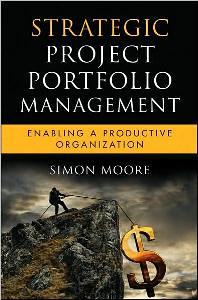
Wembley Stadium (photo: Martin Pettitte via Flickr)
Wembley stadium is the home of English football (or English soccer if you’re American) and was rebuilt in the 2000s replacing the original structure from 1923. The project took 5 years longer than first estimated and costs were more than double initial estimates. The stadium uses an innovative steel arch that adds aesthetic appeal, but is also load bearing and minimizes the need for internal support that could have obstructed views within the stadium. As a result the arch improves the quality of the seating. The design wasn’t quite a novel as the Sydney Opera House or Guggenheim Bilbao but nonetheless included a design element in the arch that was unprecedented, making best practice techniques such as reference class forecasting impossible because there are no useful historic estimates to draw on – it had not been done before. This lack of historical precedent is often a red flag in accurate project planning.

photo: Kol Tregaskes via Flickr
There appear to be several reasons for delay in the case of Wembley stadium:
Bidding Process and Winner’s Curse
The contract was bid out and awarded to one of the lowest cost bids. This creates a winner’s curse situation, where it’s likely that the winning bid is too aggressive in estimating the actual costs of the project. The cost of the project rose 36% between the bid being accepted and the contract being signed.
Implementation Of An Unprecedented Design
The arch implementation was problematic, ultimately the sub-contractor for the arch was replaced midway through the project, and the delay caused further problems. It appears that the the fundamental issue was attempting a stadium design using a load bearing arch that was novel and untested in previous stadium designs. This is typical of projects that are too innovative, and is one of the reasons that the Denver Airport Baggage System failed. Projects with formal budgets and timelines are not the place to be prototyping unproven techniques and processes. At least not if you’re hoping for a credible initial estimate of how long the project will take.

Source: Martin Pettitt (via Flickr)
Information Flow and Incentives
Information flow around the project was never straightforward and incentives were not well aligned. The contractor was conscious of disclosure to their shareholders and their relationship with the sponsor of the project became so tense as to ultimately end in legal action. In part, this appears to be related to the fixed price nature of the contract – any delay had immediate implications for profitability. This may have lead to two interesting situations, in which it appears more junior employees were better informed about the project than senior management, perhaps because the implications of delay for so serious for profitability that information was not eagerly shared, note than around this time senior management was making statements that the project was on track:
- Firstly, a whistleblower within the accounting department claimed to know of project delays months before they were disclosed.
- Secondly, in the UK it was possible to place bets on potential delays on the project. These bets were stopped after the observation of “men in hard hats placing big bets in the Wembley area”.
It is also interesting that after the reviews were disclosed, management then instituted a “peer review” process to better assess the performance of in flight projects.
Trust, Drugs and Scope Changes
As with any project, there are many factors at play.
After the first delays, the sponsor and contractor became less willing to conduct work in parallel due to mistrust of completion dates, this may have added a few months to completion, but in the context of years of delay doesn’t appear to be a primary factor. It is interesting though that on delayed projects, further delays can be self-fulfilling as trust in the critical path diminishes.
There was press speculation that workers on site were using drugs. This claim is hard to substantiate and was never proven.
There were some scope changes, though again, it appears that the construction of the arch (part of the initial design) was a key factor in the delay. Unlike other projects such as the FBI’s Virtual Case File where scope change was a key contributor to delay.
Conclusions
Fundamentally, when attempting a unique work item, such as a novel load bearing steel arch as fundamental part of a stadium, it is very hard to estimate cost and duration with precision. Awarding the work via a bidding process with a fixed price contract exacerbates this problem, because the winning bid will be more likely to underestimate the required work due to the winner’s curse. In addition, it appears information flow could have been improved on this project – if junior employees were aware of potential delays and senior management was not, information was clearly not being shared effectively.
You can see more of these sort of case studies at www.projectcasestudies.com or follow me on Twitter here for blog updates, or consider reading my book.

Arch Detail - Jesse Loughborough (via Flickr)










